The Garst Museum exhibits an American collection of nostalgic household items. which would have been found in early homes of the 1900s. Many of these items were gifted to the museum from various family collections. While some of these items may be familiar to many, there are also items that are no longer in use or have been replaced by modern inventions.
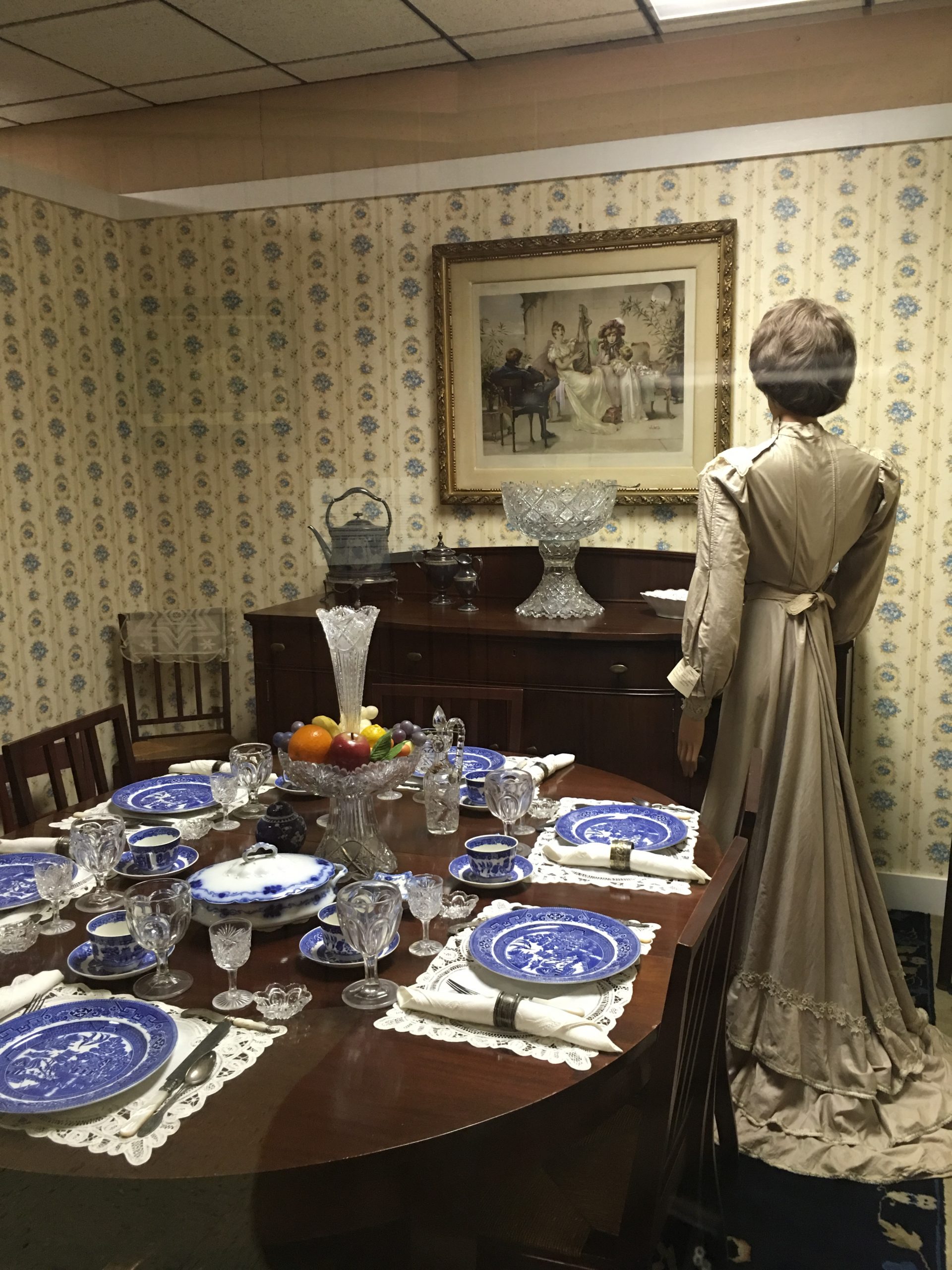
The formal dining room was once a separate space where families would gather together to enjoy an evening meal. Our family also celebrated birthdays, anniversaries and special occasions in our dining room creating long-lasting memories. This room was one of our favorite places in the house. The table was built by my father and a matching hutch was placed up against the wall. Light floral wallpaper decorated the wall with a window that looked out into the cornfields behind our backyard.
The style of the Garst Museum dining room reminded me of our grandparents’ dining room with an area rug, chandelier and multiple windows.
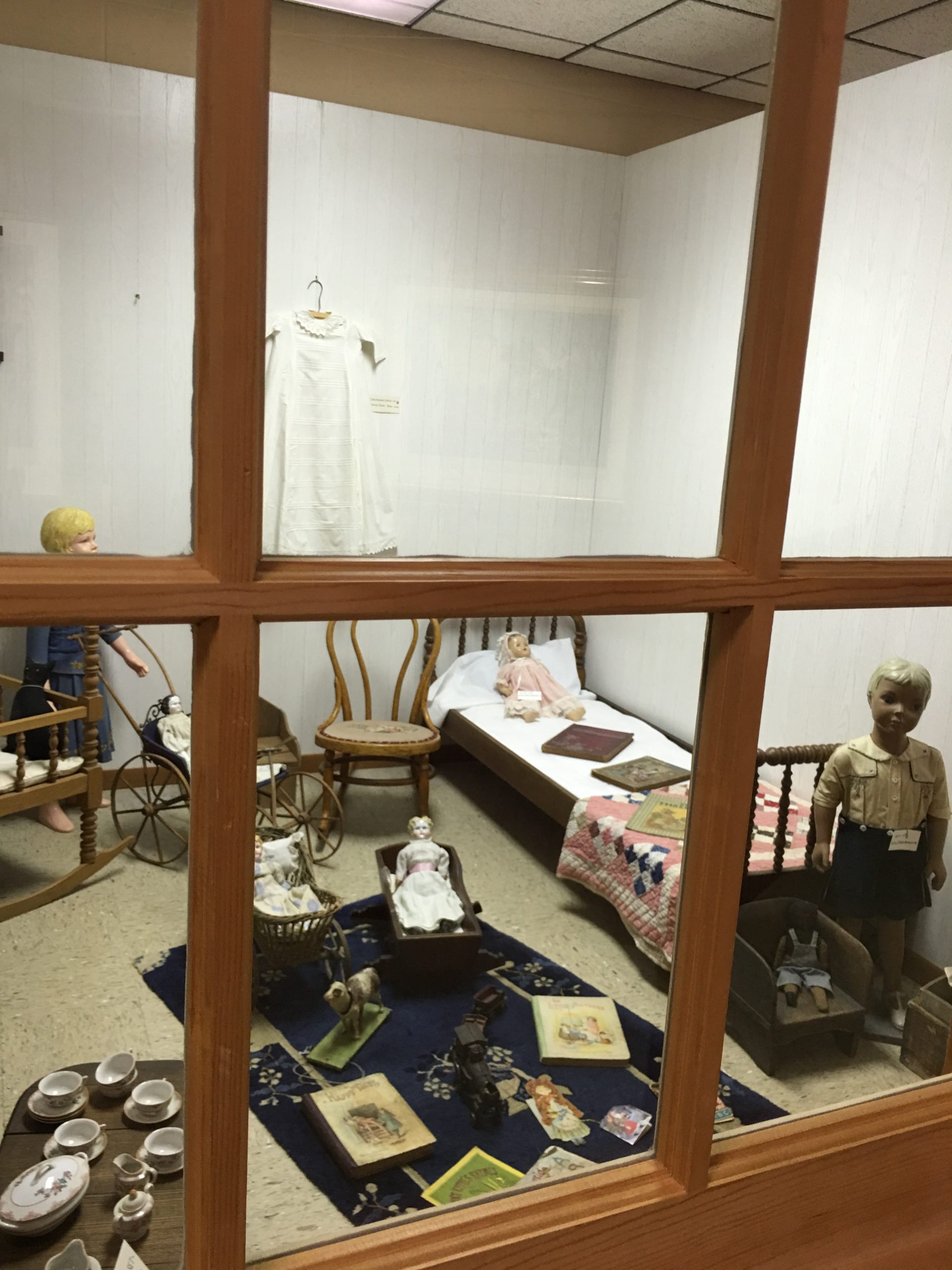
While our home did not have a formal children’s playroom, our basement was where most of our toys, games and electronics were stored. As we grew older, there was a television, couch and desk that was built up against the wall.
The Garst Museum children’s playroom seemed to have been built for an upper middleclass family. The items within the room included a China tea set, China dolls and a baby buggy.
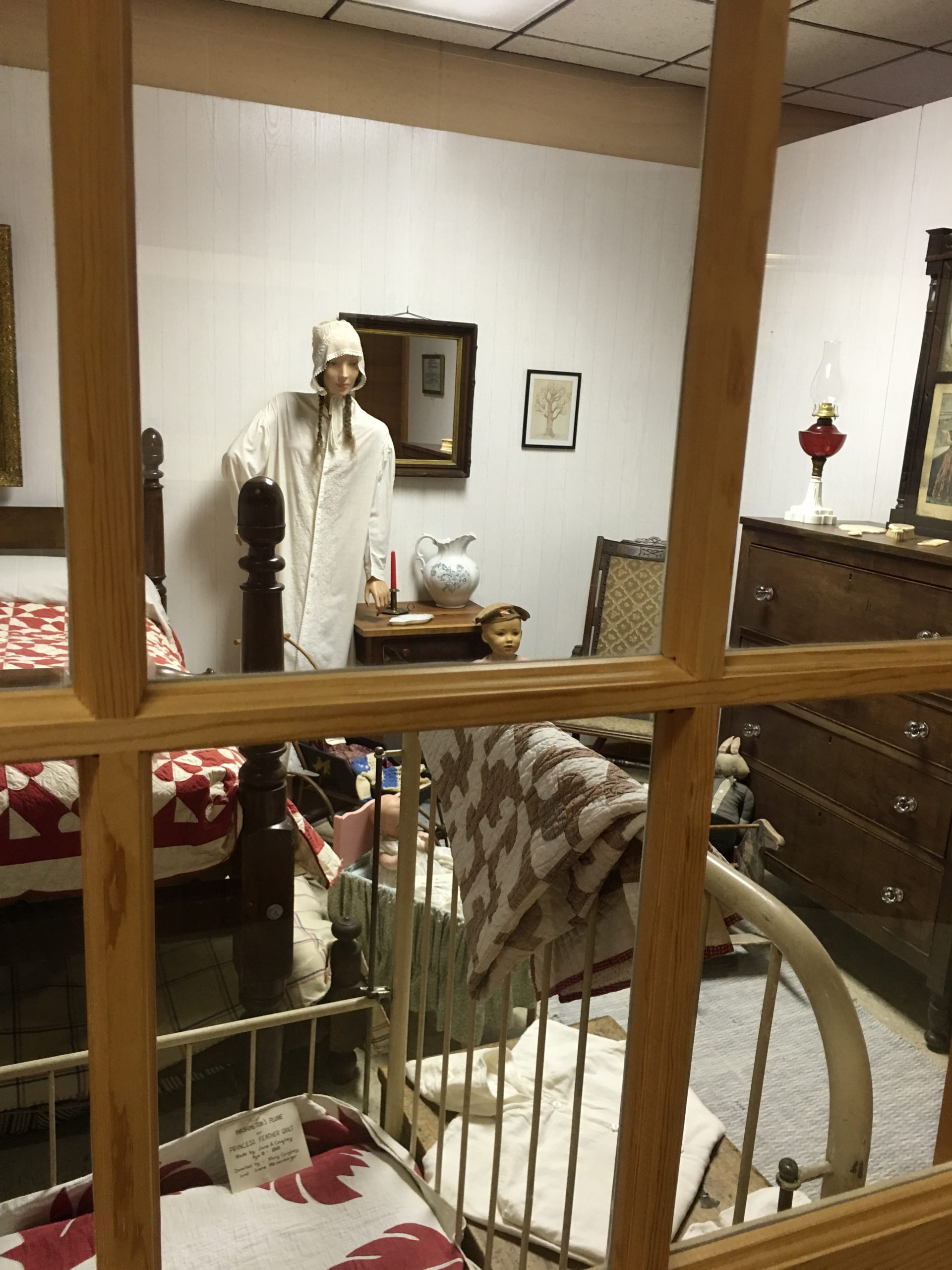
Our family owned a three-bedroom, one bath bi-level home with a garage. My sister and I shared a bedroom where we each had a bed and our own dresser and my brother had his own room as well. My youngest sister arrived while I was a freshman at Bible College, so they created a bedroom in the basement for my brother when I moved back home over the summer. My parents’ room was not much bigger than our rooms and was modestly decorated.
At the Garst Museum, the bedroom predated indoor plumbing and heating. Modestly decorated, the early bedrooms were decorated with trundle beds (a bed that could be pulled out from the main bed) and chamber pots (in place of a bathroom for nighttime emergencies). Many family members in the early 1900s would have slept in the same room.
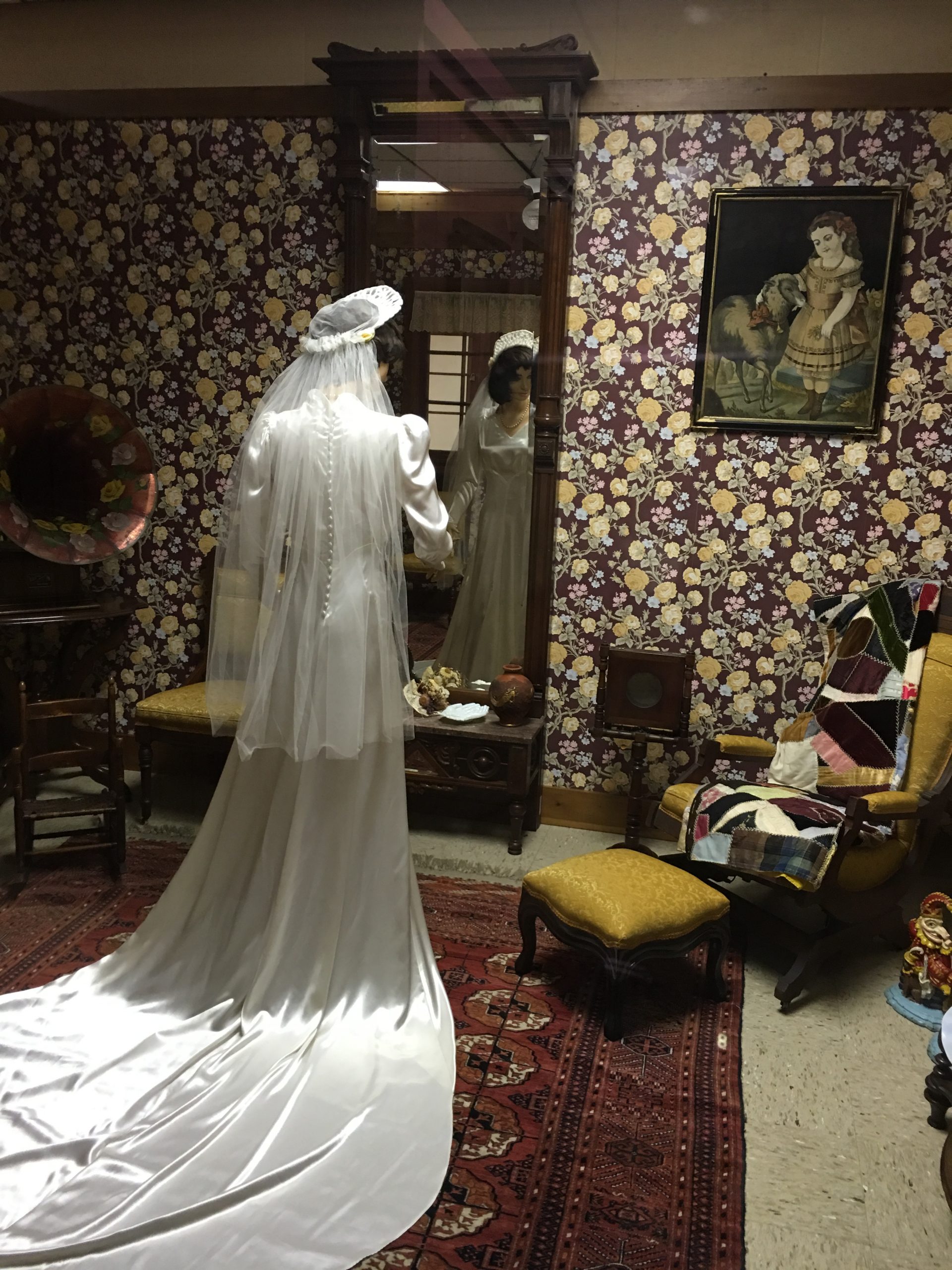
It wasn’t until my mid-20’s that I had learned the purpose of a parlor. Staying with a friend in Illinois, their family home had a separate living space which they referred to their parlor, decorated with formal furniture and a fireplace. Noticing the bay window with additional storage, I learned that the original use for this room was to hold wakes for family members who had passed. Today, many older homes with parlors have been converted into offices or playrooms.
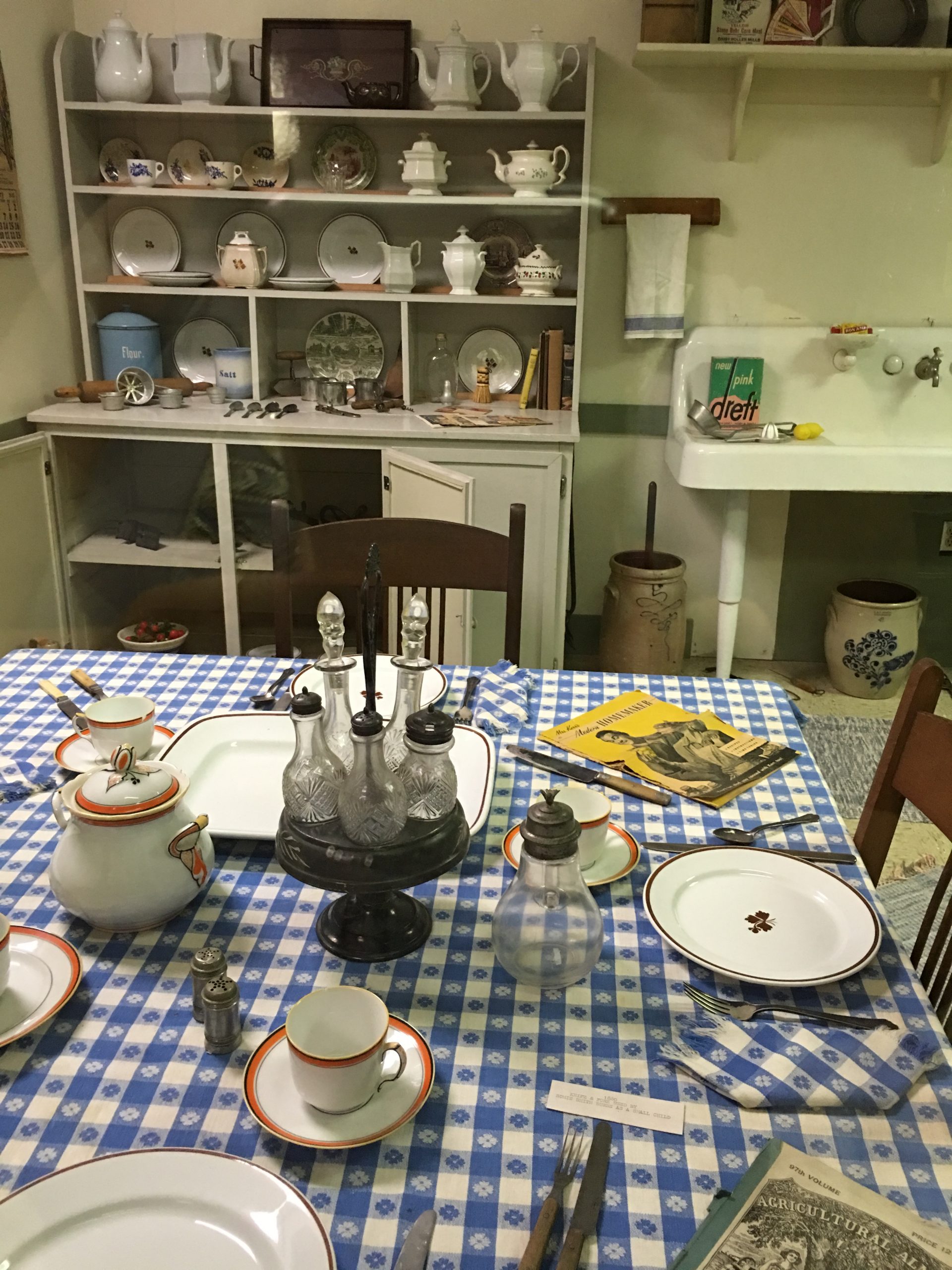
The kitchen was my favorite display with antique appliances and gadgets. Our family had the same blue and white checkered tablecloth and I clearly remembered my grandparents’ hutch in the dining room, displaying their white and brown dishes. The exhibit was a great representation of an early open-style kitchen.
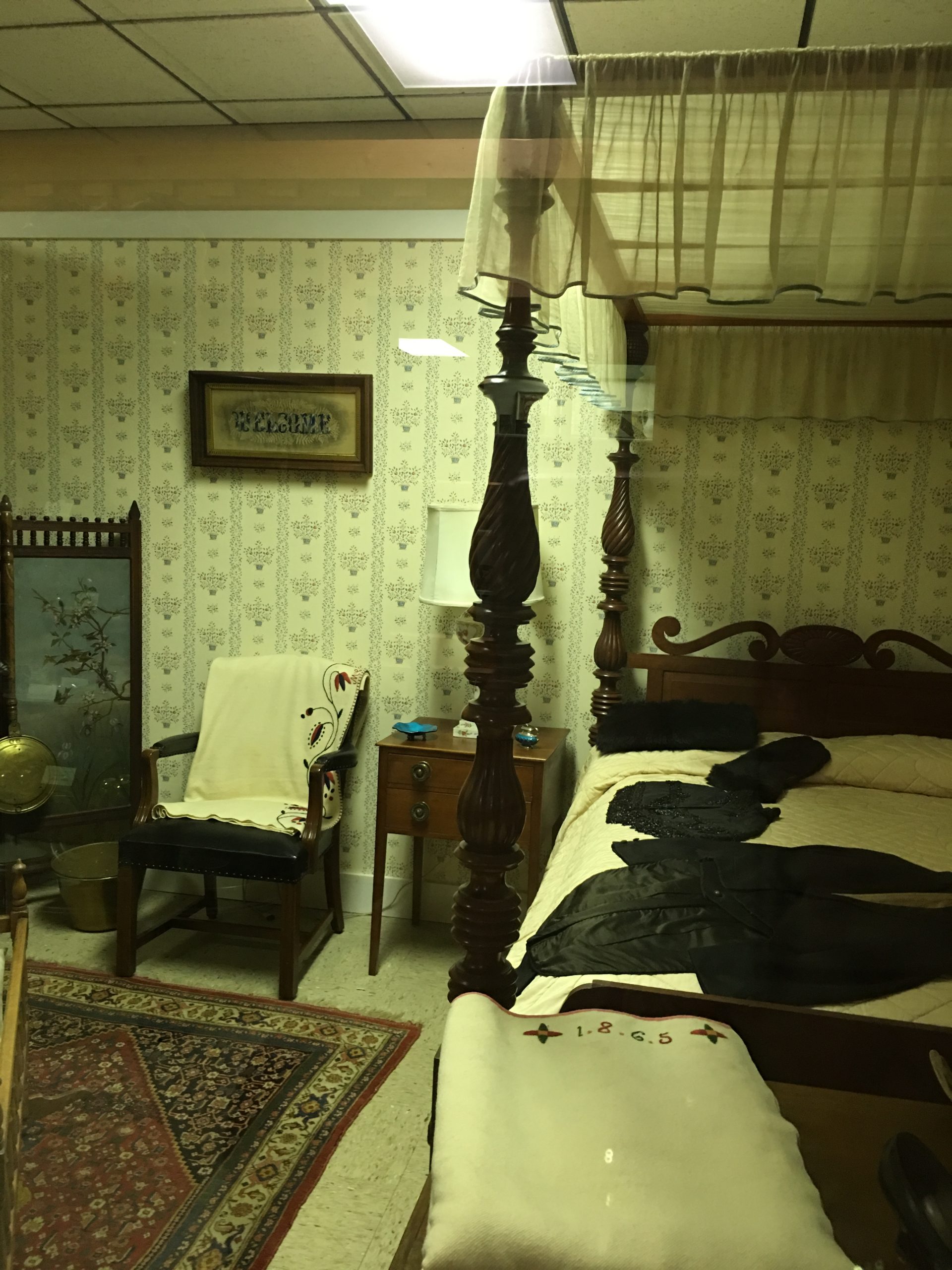
The displays began to move forward in time with more modern furnishings. Canopy beds and colorful rugs had replaced the trundle beds and wooden floors from previous decades. French-style furniture was adorned with elaborate pulls and small electric lighting replaced tapered candles.
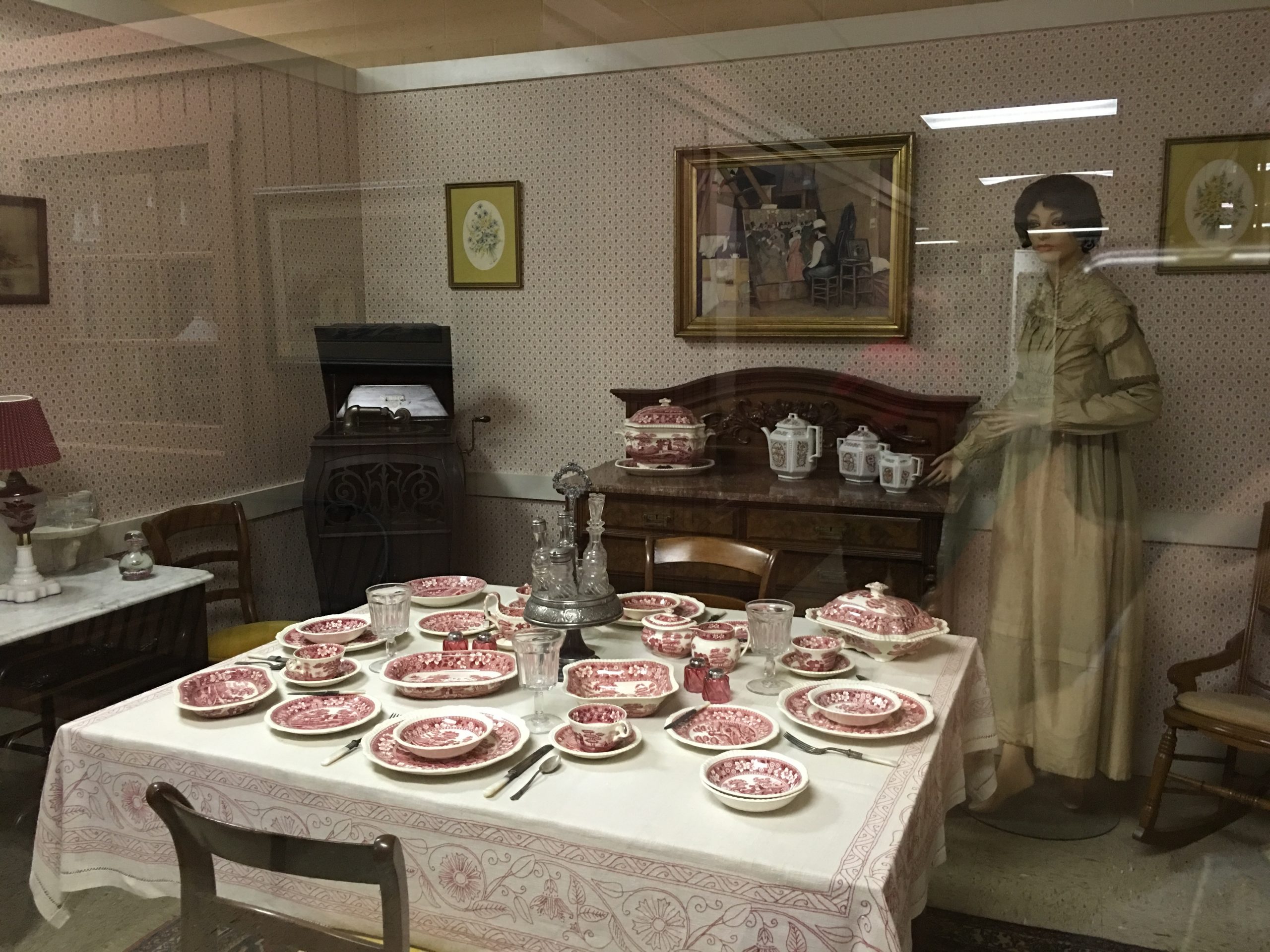
Thomas Jefferson’s Monticello home is credited for creating the formal dining room. Largely used for entertaining, many American homes followed the tradition including a room set apart for large gatherings. Large dining tables were equipped with extensions to expand for additional guests. The buffet was added to set out side dishes while the hutch displayed the beautiful China dishes.
While many homes have kept the traditional, formal-style dining room, there seems to be a shift in the home design. With an open floor plan to include a large kitchen and an island that extends to the family/living room, the space has become the main focal point of the home. Additional features may include large walk-in pantries, upscale appliances and of course, wine refrigerators, but the importance of the family home and its design remain ever changing.
Have you visited the “Family Life” exhibit at the Garst Museum in Greenville? Do you remember some of the items on display? I would love to hear about your experience if you would kindly leave a message in the comments section below. Many thanks for reading about my visit to Garst Museum and wishing you many Happy Travels!
What to See and What to Do:
Garst Museum
205 North Broadway
Greenville, OH 45331
Telephone: 937 548 5250
- Admission: $12 for adults, $11 for seniors, $9 for youth, $9 for Darke County Genealogy Society Members, Free for children aged 5 and below and for DCHS Members
- Hours: Tuesday – Saturday from 10AM to 4PM & Sunday from 1PM to 4PM, Closed Mondays, Major Holidays and the Month of January
- Amenities: Historical exhibits, educational exhibits, research center, historic figures, museum store and special events
- Tips: Allow yourself plenty of time to visit each of the exhibits and wear comfortable shoes.
Where to Stay:
The Inn at Versailles
21 West Main Street
Versailles, OH 45380
Telephone: 937 526 3020
Where to Eat:
The Merchant House
406 South Broadway
Greenville, OH 45331
Telephone: 937 459 4405
Pig candy and the Monte Cristo sandwich….absolutely amazing!
Where to Drink:
Kennedy Vineyard
3911 State Route 722
New Madison, OH 45346
Telephone: 937 273 8381
What to Read:
- Annie Oakley, by Charles J. Shields
- Annie Oakley: A Captivating Guide to an American Sharpshooter Who Later Became a Wild West Folk Hero, by Captivating History
- Life and Legacy of Annie Oakley, by Glenda Riley